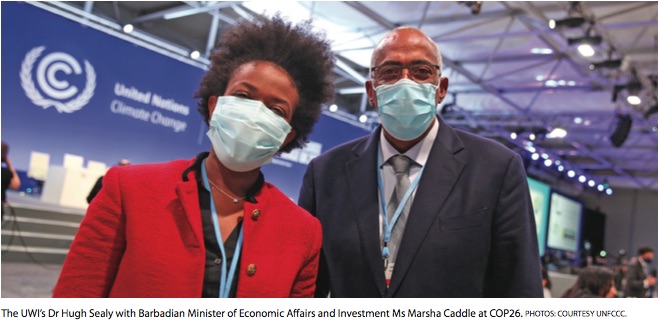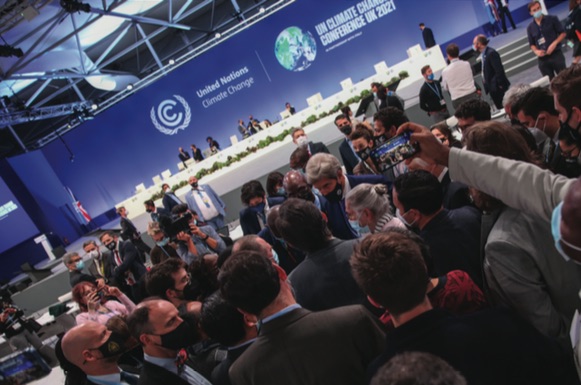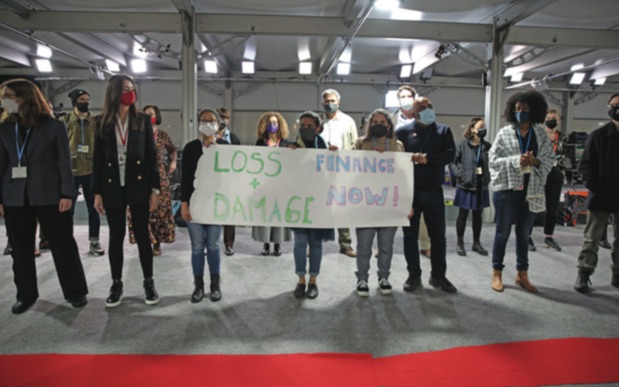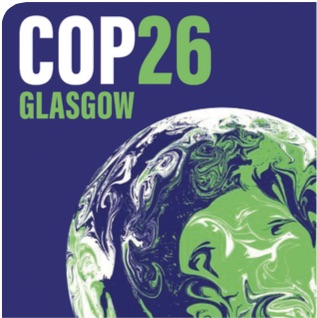Real hot as Glasgow feels the political climate
Every day, participants had to submit to nasal swabs, one of the innocuous discomforts wrought by COVID-19, which had caused COP26 to be postponed in 2020. For Dr Hugh Sealy, who has been attending COP sessions since 2007, it was still worth being there, although he had to isolate for a weekend when one of his co-facilitators tested positive.

“The threat of getting COVID was real. It is not an overstatement to say that people risked their lives to go and negotiate,” he said.
Dr Sealy, an environmental scientist at UWI Cave Hill in Barbados, was a co-facilitator for the Article 6 negotiations, at the tremulous heart of the Paris Agreement, still throbbing with unresolved issues. It was in this capacity that he was aware of the significance of his physical presence, because that was where you could interpret body language, observe gestures, and find ways to get past language differences—to read the room, as they say.
He was also the lead negotiator on mitigation ambition for the Alliance of Small Island States (AOSIS), a 30-year-old grouping of 39 countries that had the wisdom to believe in the power of a bloc in global matters. Proof of this came just before the end, when they could have shut down the final plenary over what was perceived as very weak text proposed on loss and damage. AOSIS agreed to leave the revised text until the Egypt conference next year.
In that final plenary, India, a large consumer and producer of coal, wanted the words changed from “phasing out” to “phasing down”. It caused a ruckus; “the whole plenary was catspraddled,” he said.
Dr Sealy was the technical lead of the Barbados delegation at Glasgow, and an advisor to the Government of the Republic on several matters. Prime Minister Mia Mottley had captured global attention with her powerful address at the opening ceremony (Dr Sealy said her words were quoted more than once at sessions, something he had never seen in his 14 attendances), then she returned to Barbados and his team briefed Minister of Economic Affairs and Investment Marsha Caddle, and Ambassador Elizabeth Thompson.
Among the issues that the AOSIS was vocal about was that of “loss and damage” from climate change. Early in the summit, vulnerable nations had pushed for the establishment of a dedicated fund as compensation, but there was resistance, particularly from the USA, the EU and other rich nations, and the most affected nations had to settle for an agreement to initiate dialogue about “arrangements for the funding of activities to avert, minimise and address loss and damage”.
The richer nations, responsible for the highest greenhouse gas emissions, are reluctant to agree to anything that might admit their liability in the degradation of the planet’s environment. The G20 group—19 countries plus the EU—had committed to providing $100 billion a year as grants for developing countries as climate finance (over and above what is referred to as ODA or Official Development Assistance), but had only reached US$80 billion a year, the majority of which were loans, not grants as originally envisaged.

“COP has failed on the finance side, except for the interventions made by AOSIS on special drawing rights issues. The pledge at Copenhagen in 2009 was to deliver a $100 billion a year. There is a quarrel because only about 20 per cent goes to adaptation, the rest goes towards mitigation. Most developing countries feel that finance for adaptation has to be a priority now. They want a 50-50 split. The finance gap is somewhere around $2 trillion to $5 trillion a year. The adaptation gap is around $500 million to one trillion a year. I have a problem with trying to define what the adaptation finance gap is because I do not know what we are adapting to. You have to define that.”
He said the G20 collectively accounts for 80 per cent of global greenhouse gas (GHG) emissions (the World Resources Institute says 75 per cent), and it was easy for these ageing leaders to pledge goals they would not commit to because they would not be around to account for it.
Global emissions are 50 billion tonnes, he said, and the total GHG submissions from the entire CARICOM region are about 126 million tonnes. Of that figure, Trinidad and Tobago contributes a whopping 74 million tonnes, nearly 60 per cent of the total. “On a per capita basis, that is around 20 tonnes per person, while the rest of us are around seven tonnes per person.”
Jamaica is a distant second at 15 million tonnes, and Barbados is at two million. The 126 million is a gross figure that is significantly lower when you subtract the mitigating effect of forests, which brings the region’s net emissions down to around 48 million tonnes per year, he said.
“The region as a whole is miniscule compared with global emissions, but we’re at a stage now where every tonne counts. We can’t say because we’re so small we don’t count. I think every man jack, every country has to step up. We have to reduce emissions by 45 per cent, let’s call it half, by 2030. We have to look at the region’s NDCs; are we reducing our emissions enough by 2030?”

But he knows this will be a difficult and daunting task. He said there was a CARICOM meeting before Glasgow to arrive at a unified position. “When they saw language in there about ending fossil fuels – that was sobering and unacceptable to some.”
“It’s going to be hard to reduce fossil fuels. Barbados, which has submitted a very aggressive NDC to eliminate fossil fuel use in electricity generation and transport, gets $100 million a year in revenue from taxes on gasoline. If you take away gasoline, you have to find another source. I’m not even going to talk about the continued offshore oil and gas exploration being conducted by a number of us. The UN Secretary General has clearly indicated that there is enough oil and gas out there already. We have to do some hard thinking.”
Quoting Mia Mottley, he urged, “We have to try harder.”

Since 1995, a two-week conference has taken place annually (except for 2020) as a formal negotiating arena for countries to discuss their climate commitments and actions. It is known as the Conference of the Parties (COP) to the United Nations Framework Convention on Climate Change (UNFCCC). Over time, it has grown to include global stakeholders from a variety of perspectives.

In 2015, at COP21, the Framework Convention was the first universal agreement on climate change. Known as the Paris Agreement, it has come to be the benchmark for discussions, providing a structural framework by which commitments and progress can be assessed. Except for Article 6, common time frames for nationally determined contribution (NDC) submissions, and the transparency framework which still harboured contentious issues, the “Paris Rulebook” was considered complete, with Glasgow expected to sort out these issues.

According to the UN, the heart of the Paris Agreement is the NDCs which represent the efforts by each country to reduce national emissions and adapt to the impacts of climate change. Each country is required to “prepare, communicate and maintain” successive NDCs of its intended goals. The expectation is that each NDC, starting at COP26, will be updated and presented every five years, serving as a progress report and a renewal of the commitment to fulfil pledges.

Basically, the Paris Agreement has quantified the level of greenhouse gas emissions (GHG) that exist, the targets that must be met in order to reduce the catastrophic effects of climate change on the planet (a 45 per cent reduction in emissions by 2030 will bring us only to the brink) and has identified frameworks and areas within which countries can set their policies and actions.